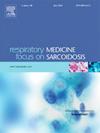MHR as a promising predictor for coronary artery disease in COPD patients: Insights from a retrospective nomogram study
IF 3.5
3区 医学
Q2 CARDIAC & CARDIOVASCULAR SYSTEMS
引用次数: 0
Abstract
Background and objective
Chronic obstructive pulmonary disease (COPD) frequently co-occurs with coronary artery disease (CAD), adversely affecting patients morbidity and mortality. Identifying new risk factors for CAD in COPD patients is essential for improving clinical management and patients outcomes.
Methods
This retrospective case-control study analyzed 406 COPD patients who underwent coronary artery computed tomography angiography (CCTA). Patients were categorized into co-CAD and non-CAD groups based on CCTA findings. Demographic and laboratory data were assessed to determine independent risk factors for CAD in COPD patients using univariate and multivariate logistic regression analyses.
Results
The co-CAD group was significantly older, had a higher prevalence of males, and included a higher proportion of individuals with hypertension, diabetes, cardiovascular diseases, as well as cerebrovascular diseases, exhibiting lower FEV1 values (P < 0.05). This group also exhibited higher levels of HbA1c, IL-6, monocyte count, and MHR (P < 0.05). Multivariate logistic regression identified age, hypertension, and MHR as independent predictors of CAD. A nomogram incorporating these predictors demonstrated robust predictive accuracy with an area under the ROC curve of 0.758 (95 % CI: 0.704–0.814), effectively stratifying patients into high and low risk for CAD.
Conclusion
The identification of MHR as an independent predictor of CAD in COPD patients opens new avenues for understanding cardiovascular comorbidities. The nomogram's integration of MHR with age and hypertension provides an effective tool for early CAD detection and management, promising to enhance clinical outcomes and decrease mortality rates in COPD patients. These insights may inform future preventative strategies against CAD in COPD.
求助全文
约1分钟内获得全文
求助全文
来源期刊

Respiratory medicine
医学-呼吸系统
CiteScore
7.50
自引率
0.00%
发文量
199
审稿时长
38 days
期刊介绍:
Respiratory Medicine is an internationally-renowned journal devoted to the rapid publication of clinically-relevant respiratory medicine research. It combines cutting-edge original research with state-of-the-art reviews dealing with all aspects of respiratory diseases and therapeutic interventions. Topics include adult and paediatric medicine, epidemiology, immunology and cell biology, physiology, occupational disorders, and the role of allergens and pollutants.
Respiratory Medicine is increasingly the journal of choice for publication of phased trial work, commenting on effectiveness, dosage and methods of action.
 求助内容:
求助内容: 应助结果提醒方式:
应助结果提醒方式:


